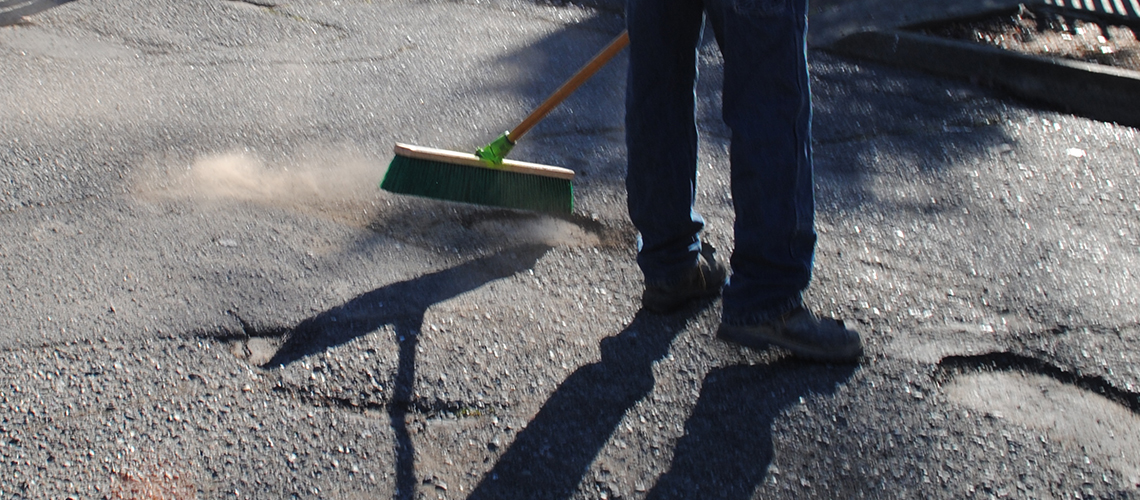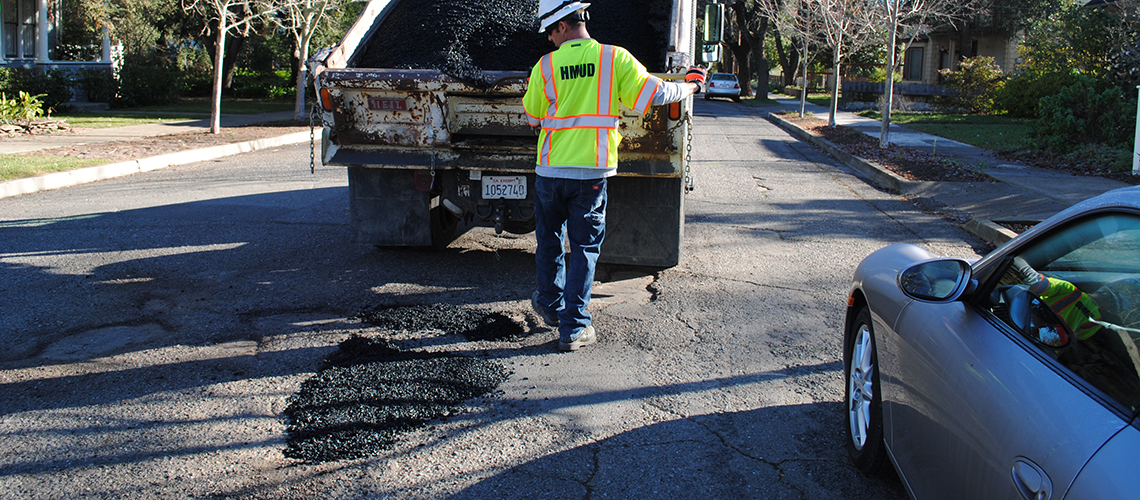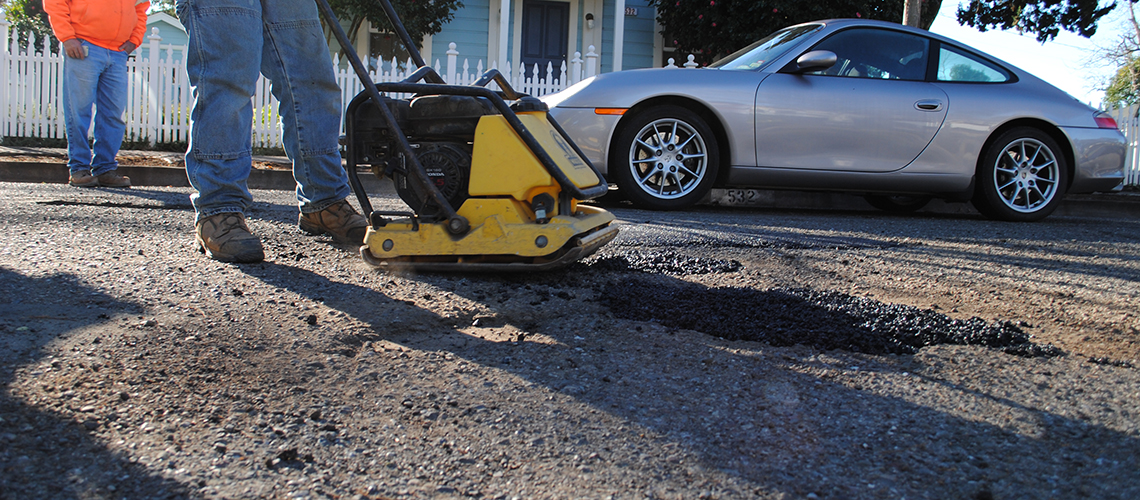Proper Installation Is the Key
Proper installation is the key to the longevity of any paving application and following is a brief guide to help insure the maximum performance for your EZ Street material.
Material Temperature And Compaction
EZ Street can be applied when air temperatures are between 0° F and 100° F; however, EZ Street will be most pliable, workable, and compactable at air temperatures ranging from 70° F to 90° F. In the winter months, warming of the EZ Street material prior to application via a “hot box”, heated dump bed, or patching truck is quite acceptable; although, it is imperative that the material temperature does not exceed 125° F . To insure optimum performance EZ Street should be applied and compacted in two inch (2″) maximum lifts . A vibratory steel wheel roller will always provide optimum results and performance; however, steel wheel or pneumatic rollers, compactor plates, wheel rolling, and hand tamping are also acceptable methods of compaction. Over compaction is rarely an issue.
Installation Procedure To Achieve Optimum Results
EZ Street will perform best and achieve maximum longevity if the following installation procedures are followed.
- Excavate entire failed pavement surface and unstable base material (including any “alligator” cracked areas).
- Clean foreign debris from the area to be patched utilizing a broom or compressed air.
- Compact sub-grade thoroughly to achieve a firm foundation. The preferred mode of base compaction would be a vibratory compactor plate or steel wheel roller; for small potholes, a hand tamp is acceptable.
- Apply EZ Street material in maximum two inch (2″) lifts.
- Compact EZ Street after each lift utilizing vibratory compactor plate or steel wheel roller.
Final EZ Street lift should be placed approximately ¾-1″ higher than the desired finished surface level prior to compaction allowing for optimal compaction and secondary compaction as a result of traffic flow.
Sweep/Clean

Fill

Compact











